The Hanok Smith Likes (스미스가 좋아하는 한옥)
5.4Km 2024-03-11
22-7 Samcheong-ro, Jongno-gu, Seoul
+82-2-722-7003
The Hanok Smith Likes is a restaurant located near Gyeongbokgung Palace, housed in a renovated hanok. It offers a fusion of Korea's traditional beauty with Italian cuisine. Specializing in oven-baked pizza and pasta, it also features a variety of Italian dishes. The oven-baked pizzas are particularly popular, known for their chewy crusts and generous toppings. In 2023, it was selected for the Michelin Guide Seoul.
Jangchung-dong Jokbal Street (장충동 족발 골목)
5.4Km 2019-09-26
176, Jangchungdan-ro, Jung-gu, Seoul
+82-2-2236-9135
The phenomenon of Jangchungdong Jokbal Street started 50 years ago with the opening of two Korean jokbal (steamed pig trotters) restaurants, followed by the influx of new jokbal restaurants during the late 70s and early 80s.
Today, the jokbal restaurants continue to serve one of the most sought Korean food from the main road and the alleyways of the Jangchungdong 1(il)-ga Street area.
CU - Jangan Tourism Hotel Branch [Tax Refund Shop] (cu장안관광호텔점)
5.4Km 2024-06-27
377, Cheonho-daero, Dongdaemun-gu, Seoul
-
Beodeul Maru - Korea Cultural Heritage Foundation Branch [Tax Refund Shop] (한국문화재재단 버들마루)
5.4Km 2024-10-15
37, Samcheong-ro, Jongno-gu, Seoul
-
Yangmiok (양미옥)
5.4Km 2020-01-06
62, Chungmu-ro, Jung-gu, Seoul
+82-2-2275-8838
Yangmiok takes pride in serving customers dishes prepared with only the finest ingredients. A special sauce made with soy sauce, sugar, chili powder, sesame oil, garlic, and ginger is served with beef dishes upon request.
Africa Museum of Art (아프리카미술관)
5.4Km 2022-10-26
24-1, Samcheong-ro, Jongno-gu, Seoul
+82-2-730-2430
The Africa Museum of Art was established with the purpose of hosting various art festivals and providing the grounds for researching various art themes. A major principle of the gallery is to promote works of art that actively attempt to explore the human mind.
Jongno Yugane Yukoebindaetteok(종로유가네육회빈대떡)
5.4Km 2021-04-10
86, Supyo-ro, Jongno-gu, Seoul
+82-2-2266-0999
A restaurant with over 30 years’ tradition. This Korean dishes restaurant is located in Jongno-gu, Seoul. The most famous menu is sliced raw beef.
Hotel PJ (호텔PJ)
5.5Km 2021-03-16
71, Mareunnae-ro, Jung-gu, Seoul
+82-2-2280-7000
Hotel PJ is located near Euljiro 4-ga, a transportation hub connecting subway lines 2, 3, 4, and 5, allowing guests to reach Seoul's tourist destinations such as Myeong-dong, Namdaemun, Dongdaemun, Namsan, Insa-dong, Hongdae, and Daehangno with ease. The hotel has 272 guestrooms as well as a restaurant, cafe, banquet halls, and a business center.
Pyeongando Jokbal (평안도족발집)
5.5Km 2021-03-30
174-6, Jangchungdan-ro, Jung-gu, Seoul
+82-2-2279-9759
Pyeongando Jokbal has a history of over 50 years, and is very popular among all the jokbal (pig's trotter) restaurants in the Jangchung-dong Jokbal Street area. The taste is outstanding, making this hard-to-find restauant a favorite among jokbal lovers.
Manseon Hof (만선호프)
5.5Km 2024-03-15
19, Eulji-ro 13-gil, Jung-gu, Seoul
+82-2-2274-1040
Located in Euljiro Nogari Alley, Manseon Hof is a beer bar. The place is bustling late at night with people drinking beer and eating snacks like nogari (dried young pollack) and fried chicken at sidewalk tables. It is a great place to enjoy a cold draft beer and grilled dried young pollack dipped in spicy sauce and mayonnaise. Golbaengi muchim (sea snail salad) and gyeran mari (rolled omelet) are also other popular accompaniments.
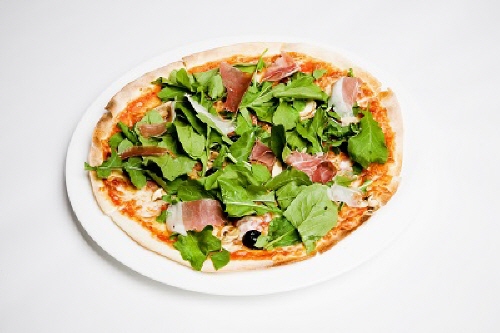
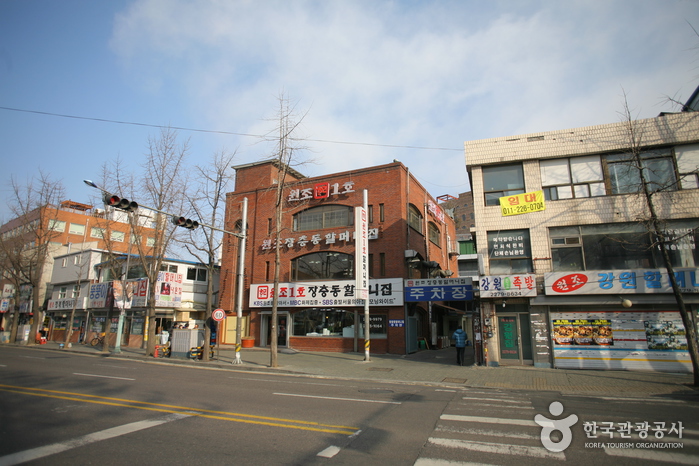

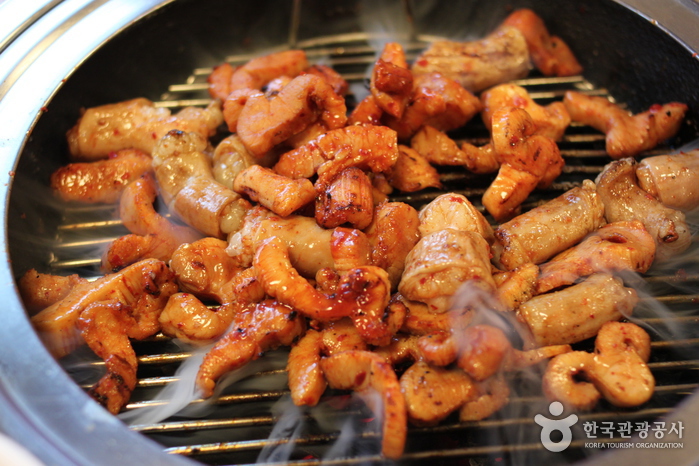
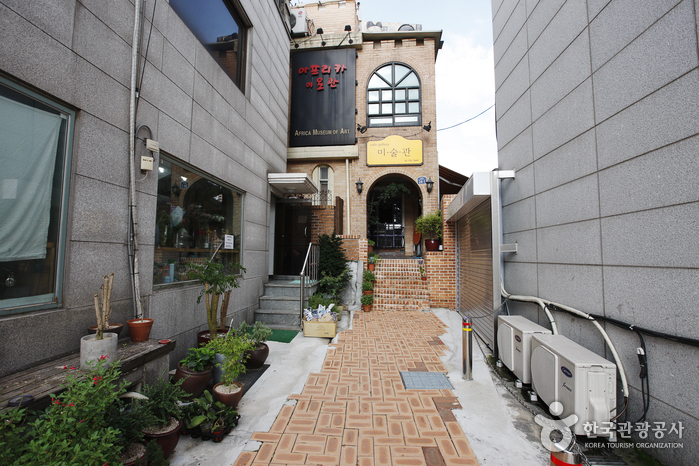
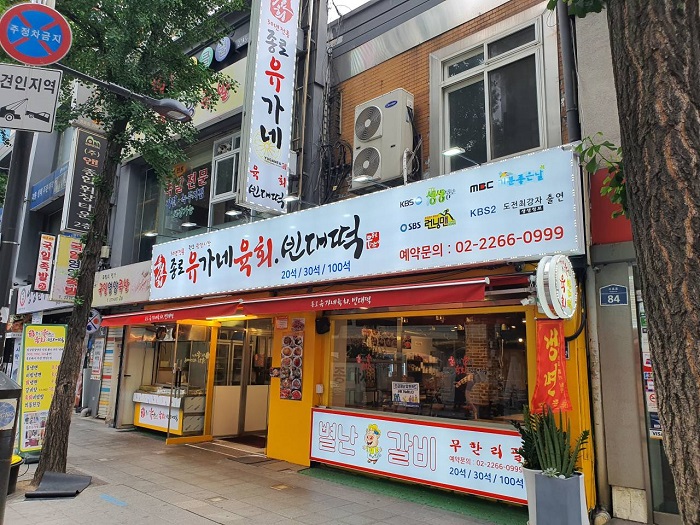
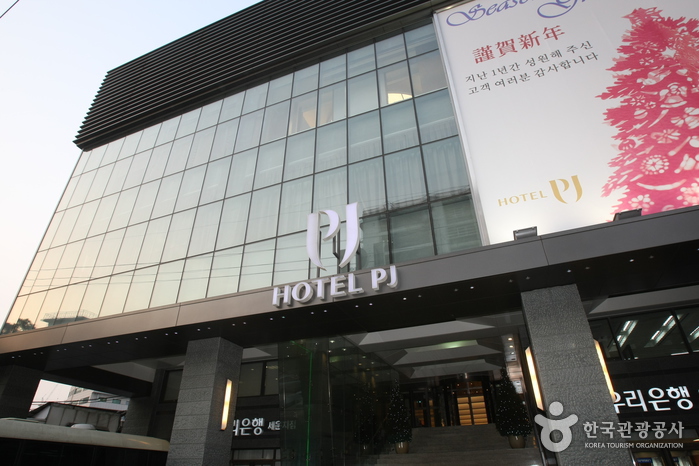
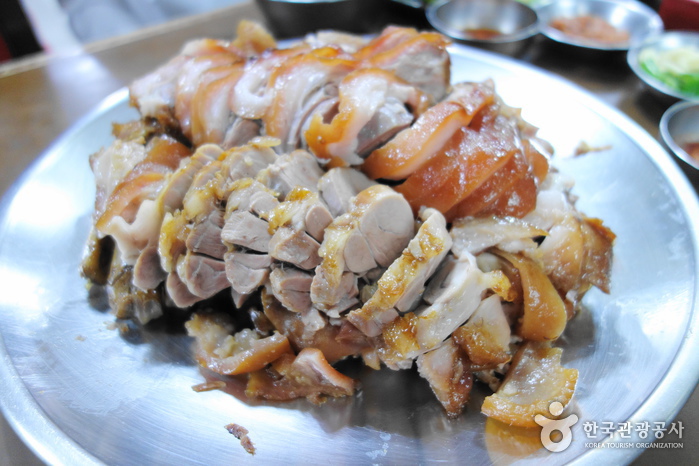
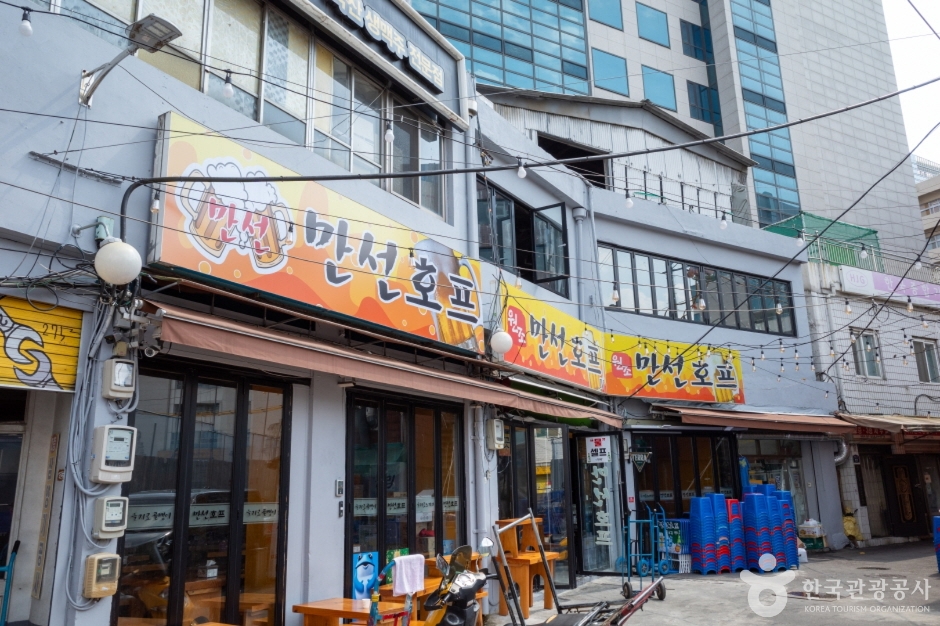
 English
English
 한국어
한국어 日本語
日本語 中文(简体)
中文(简体) Deutsch
Deutsch Français
Français Español
Español Русский
Русский